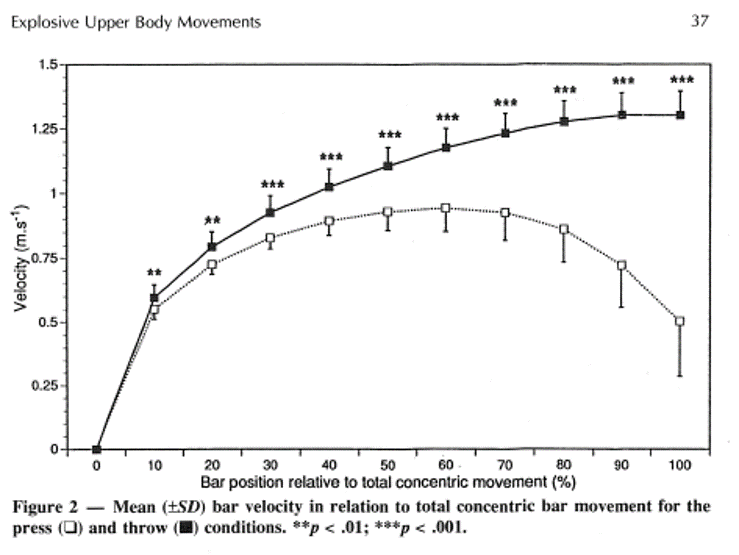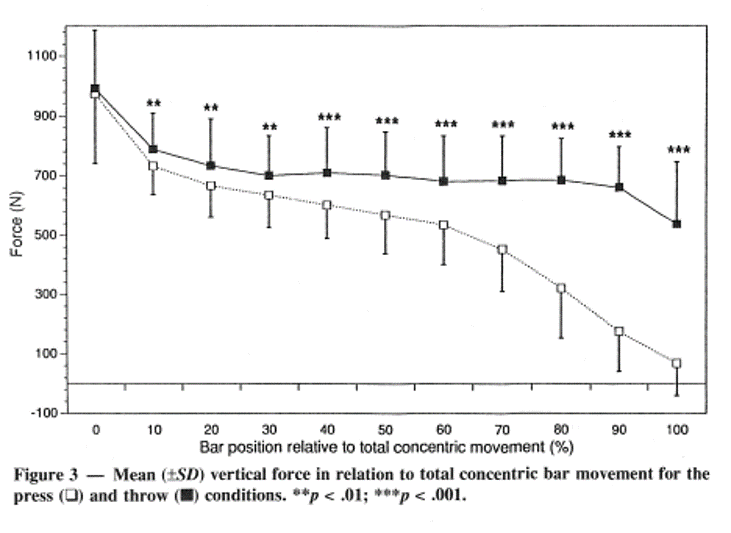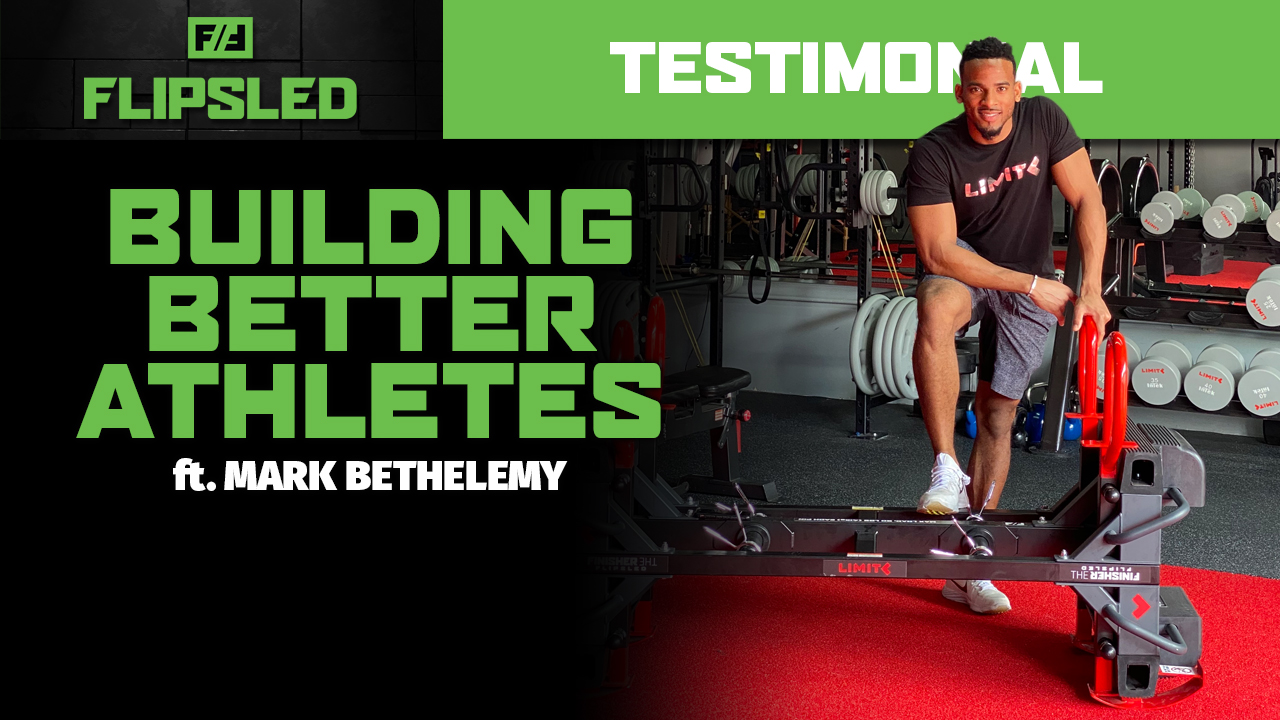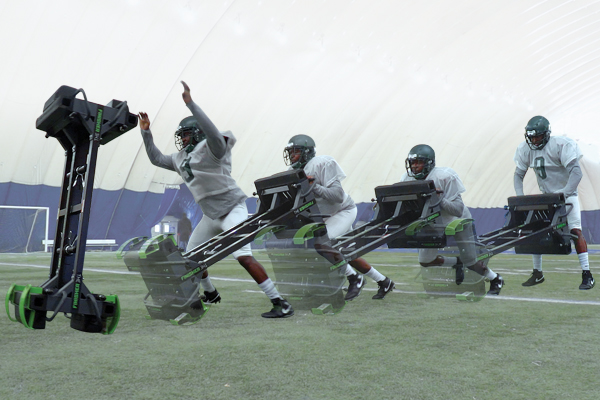If you’re looking to increase your athletic performance, win more games, become noticed, etc, you’ve come to the right place. With the FlipSled's unique "finishing" moves, you are going to get faster, stronger, and create more power at a more accelerated rate than your competitors.
By fostering and improving an athlete’s power output capabilities, this will give them the advantage over their opponents and ultimately lead them to success (Haff et al., 2001).
Finish Your Moves
Research has demonstrated that if a lifter is able to throw an object, the force and velocity will be significantly different compared to when the lifter must maintain a grip on the object (Newton, Kraemer, Hakkinen, Humphries, & Murphy, 1996).
Velocity
Two of the figures of this study are shown here. The first figure below (Figure 2) shows the change in velocity of the bar with subjects performing a bench press vs a bench press throw. In both conditions the subjects were told to move the bar as rapidly as possible through the entire range of motion.The top curve (closed boxes) shows the velocity throughout the range when the bar was thrown. The bottom curve (open boxes) shows the velocity throughout the range when the subject kept their grip on the bar. As noted, in both cases the subject was told to move the bar as rapidly as possible through the entire range of motion of the movement.

Applied Force
How does this translate to applied force you may ask. Fortunately the researchers asked this as well. The graph below (Figure 3) follows the same 0-100% of range of motion of the explosive bench press (open boxes) and explosive bench press throw (closed boxes). The force applied to the bar that was able to be thrown (top curve) was relatively flat throughout most of the range. On the other hand, when the subject was forced to hang onto the bar, the force applied to the bar steadily decreased throughout the lift (bottom curve).

As a coach or trainer, when you train with equipment or moves where you can’t throw, the neurological path that is being burned into the athlete’s neuromuscular system is to “pull the punch”, or slow down prior to contact. With a throwing movement, they are being conditioned to explode through their opponent.
Power Production
If we look at power production (work done over time) at the end portions of these movements, this data is quite revealing. At 90% of the range of motion, the “press” power was approximately 135 watts. At 90% of the range for the “throw” the power output was 858 watts. Throwing provided a greater power output of over 6 times versus pressing.
At the end of the movement (100%), which is where it counts if you are throwing anything, the power is 40 watts for the “press” and 702 watts for the “throw”. Yes, this is a 1700% greater power output at the end of the movement when the subject can throw the object as opposed to keep it in their hands!
Haff GC, Whitley A, Potteiger JA. A brief review: Explosive exercises in sports performance. Strength Cond J, 2001; 23(3): 13-20. https://elitetrack.com/article_files/explosive-exercise-performance.pdf
Newton, Robert U. (1996). Kinematics, kinetics, and muscle activation during explosive upper body movements. Research Gate (p.36-38). https://www.researchgate.net/publication/223128720_Kinematics_kinetics_and_muscle_activation_during_explosive_upper_body_movements
Click here for more info on our FlipSled functional training sled.
Watch NFL Combine Trainer, Bill Welle, on the FlipSled.
Follow us on social media for daily fitness videos and inspiration!
https://www.instagram.com/theflipsled
You May Also Like
These Related Stories

FlipSled Benefits: More Moves. More Efficient. Less Injuries.

How to Create More Powerful Football Movements

.png?width=2004&height=239&name=FlipSled%20Logo%20HRZ%20WHITE%20(1).png)


